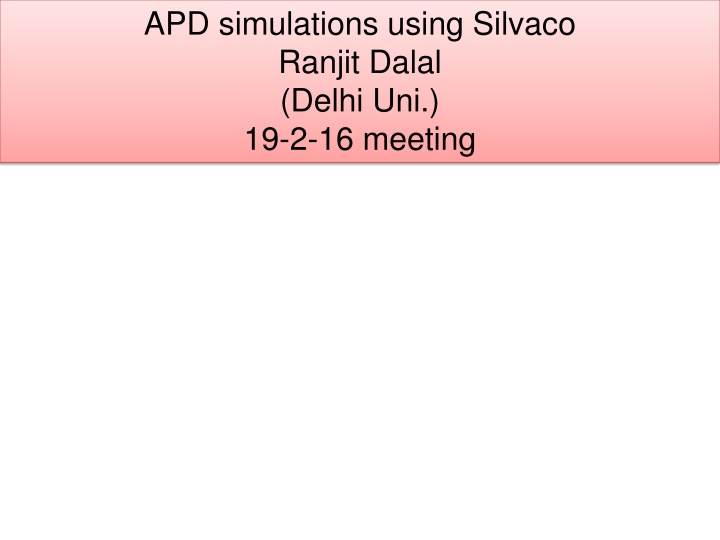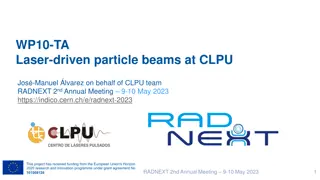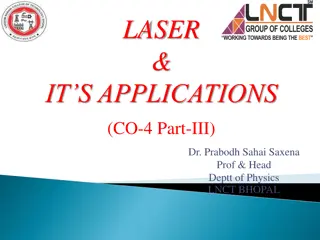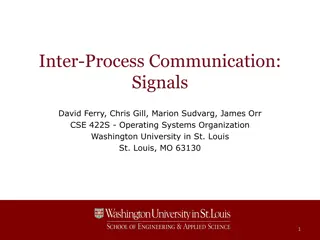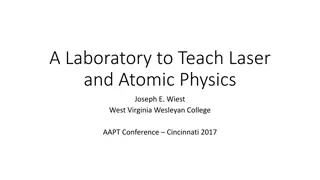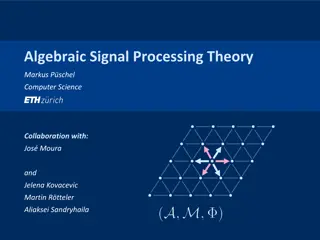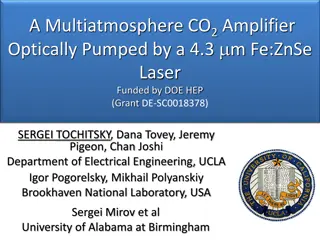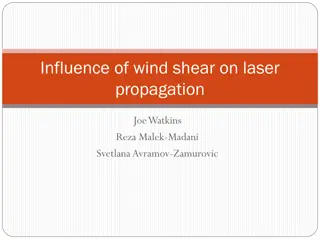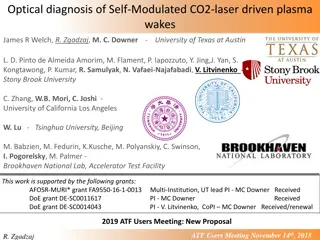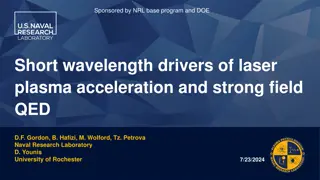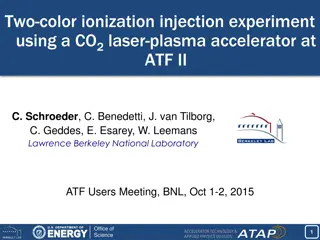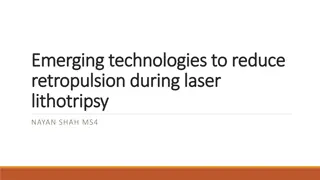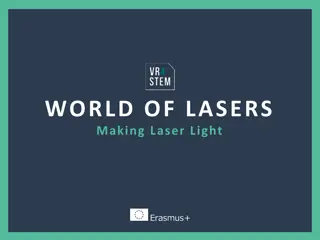APD Simulations Using Silvaco: Insights into Laser Signal Behavior
Detailed simulations utilizing Silvaco software for Avalanche Photodiode (APD) structures. Gain deep insights into laser signal characteristics, electric field profiles, TCT signals, signal evolution post-laser firing, and gain versus bias relationships for varying laser wavelengths. Understand the impact of bulk doping variations on APD performance and signal behavior.
Download Presentation

Please find below an Image/Link to download the presentation.
The content on the website is provided AS IS for your information and personal use only. It may not be sold, licensed, or shared on other websites without obtaining consent from the author.If you encounter any issues during the download, it is possible that the publisher has removed the file from their server.
You are allowed to download the files provided on this website for personal or commercial use, subject to the condition that they are used lawfully. All files are the property of their respective owners.
The content on the website is provided AS IS for your information and personal use only. It may not be sold, licensed, or shared on other websites without obtaining consent from the author.
E N D
Presentation Transcript
APD simulations using Silvaco Ranjit Dalal (Delhi Uni.) 19-2-16 meeting
Simulation Structure -300 Micron Thick APD - Junction Depth = 57 micron micron - Error Function (Dist.) Doping profile (similar to actual device) - Three bulk Doping - 1.3 x 1014 cm-3 - 1.4 x 1014 cm-3 (Measurement value) - 1.3 x 1014 cm-3 -Three different type of lasers - 670nm, 980nm, 1060nm - External circuit (Bias T) Doping Profile for a typical structure
TCT signal -Very fast initial peak for all the lasers - Large (and slow) diffusion component for 670nm laser -1060 nm laser is creating fastest signal - Similar case is expected for charged particles
Electric field Profile p+ n+ -Higher field around junction - Width and height of field distribution increases with bias - Increment is mainly inside bulk - Effectively, about 140 micron bulk is depleted at 1800V
TCT signal for 1060nm front laser (Bias vary) Bias Voltage vary -Extremely fast signal with about 2-3nm width - Signal will be compared with CERN measurements
TCT signals for 980nm laser (Bulk doping vary) Bulk doping vary - Significant effect of bulk doping is seen
Signal evolution (after 1 ns of laser fire) Total Current Density Hole component e- component - hole/electrons get separated within 1ns for infrared laser - Similar evolution is expected for charged particles too
Gain vs bias for 670nm laser (three bulk doping) -Significant effect of bulk doping on gain - Higher bulk doping results in narrow depletion region or higher electric field for a given bias - Higher bias results in higher gain
Gain vs bias for 1060nm laser (3 bulk dopings) -Slight different bulk doping can result in significant gain variation - Must be carefully tuned
Gain vs bias for bulk 1.4x1014 cm-3 - Higher gain for 670nm, lowest for 1060nm!
Gain vs bias (Simu. and measured result) -Simulation and measured values have similar trends and values - Remember, there can be slight variation in bulk doping (for different devices), different way of calculating and measuring device gain and different baselines for gain calculating (500V for measurement, signal without multiplication for simulation)
Summary 300 micron APD structure with 57micron junction depth is used to carry out simulations Large and slow diffusion component for 670nm laser is observed Very fast TCT signal (2-3ns) could be induced using infrared TCT (or charged particles) Significant effect of bulk doping on APD gain is seen. More coordinated simulations with CERN and Princeton will follow. Suggestions questions.
Doping Profile 0.004 14.001 25.898 39.895 54.943 70.695 86.444 101.495 111.643 120.046 128.097 135.451 141.061 145.096 151.238 153.748 155.465 156.186 156.857 158.987 9.10E+16 5.57E+16 3.68E+16 2.21E+16 1.23E+16 5.80E+15 3.12E+15 1.55E+15 1.08E+15 6.89E+14 4.72E+14 3.00E+14 1.70E+14 1.23E+14 4.53E+13 2.82E+13 1.57E+13 7.47E+12 2.84E+12 6.55E+12 - Doping profile provided by Sebastian - 100 micron is assumed to be removed - Junction at about 57 micron - It was wrong to assume APD thickness equal to 130 micron - Bulk doping may be slightly different from measurements (measurement errors!) - For 57 micron junction depth - Initial bulk doping of 1.55e15 is used For junction depth equal to 52 micron - Initial bulk doping of 1.30e15 is used
